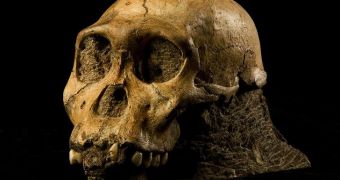A new paper published in today's issue of the journal Biological Reviews challenges the long-held assumption that our early ancestors evolved to have robust faces because they needed the right anatomy to feed on nuts and other foods that were difficult to crush.
Thus, biologist David Carrier and physician Michael H. Morgan with the University of Utah in the United States argue that, according to evidence at hand, nasty fights might just be the ones to blame for our ancestors' not-so-good looks.
In their paper in the journal Biological Reviews, the specialists claim that our ape-like ancestors' strong, robust faces were not so much intended to help them get proper nourishment but rather made it possible for them to take a punch without being severely injured.
These punches would have been delivered during what David Carrier and Michael H. Morgan like to call prehistoric versions of bar fights, i.e. conflicts over potential mates, available resources, or who got the best cave to sleep in.
This theory that our early ancestors evolved to have robust faces in order to better cope with fights over ladies and food is backed up by the fact that their hands were built in such ways that forming a fist capable of delivering a serious blow was not an issue.
Besides, it appears that, in the case of our ape-like ancestors, the parts of the skull that evolved to be especially robust were also the ones most likely to get hit and sustain injury during a fight, David Carrier and Michael H. Morgan explain.
“What we found was that the bones that suffer the highest rates of fracture in fights are the same parts of the skull that exhibited the greatest increase in robusticity during the evolution of basal hominins,” says David Carrier, as cited by Phys Org.
“Importantly, these facial features appear in the fossil record at approximately the same time that our ancestors evolved hand proportions that allow the formation of a fist,” the University of Utah researcher goes on to add.
Due to the fact that they were less likely to get into fights and get punched in the face, early females looked very different to males, especially as far as their faces were concerned. Specifically, evidence uncovered thus far indicates that their faces were not as robust or as strong as those of males.
“Together these observations suggest that many of the facial features that characterize early hominins may have evolved to protect the face from injury during fighting with fists,” David Carrier sums up the significance of these findings.

 14 DAY TRIAL //
14 DAY TRIAL //